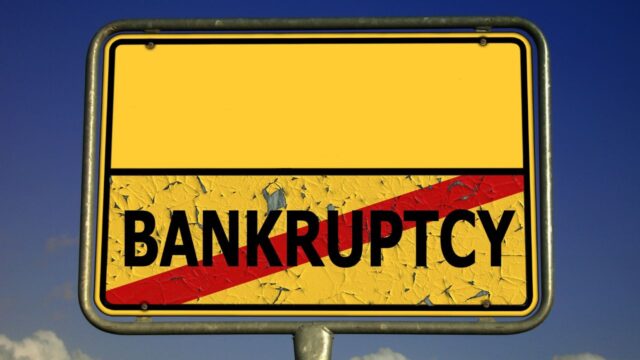
What is the Wage Earner Plan (Chapter 13 Bankruptcy)?
The Wage Earner Plan, also known as Chapter 13 bankruptcy, is a repayment plan for individuals who are struggling to pay their debts. Under this plan, debtors are required to make regular payments to their creditors over a period of time, typically three to five years. The amount of the payments is based on the debtor’s income and expenses. Once the repayment period is complete, any remaining unpaid debts are discharged. This type of bankruptcy can be beneficial for debtors who are behind on their mortgage or car payments, as it allows them to catch up on these payments over time.
It can also be helpful for those who are facing foreclosure or repossession. However, it is important to note that not all debts can be discharged under Chapter 13 bankruptcy. This includes child support and alimony payments, as well as student loans and certain taxes. If you are considering filing for Chapter 13 bankruptcy, it is important to speak with an experienced bankruptcy attorney to learn more about your options and whether this type of bankruptcy is right for you.
How does the Wage Earner Plan work?
The Wage Earner Plan is a type of bankruptcy that allows individuals to repay their debts over time. It is also known as Chapter 13 bankruptcy. Under this plan, individuals are able to keep their property and assets, but they must use their future income to repay their creditors. This repayment plan is typically for a period of three to five years. during which time the debtor’s wages are garnished and paid to the trustee assigned to the case. The trustee then distributes the payments to the creditors. If the debtor completes the repayment plan, any remaining debt is discharged. However, if the debtor fails to make payments or does not complete the repayment plan, the court may dismiss the case and the debtor will be responsible for repaying the debt in full.
Who is eligible for the Wage Earner Plan?
The Wage Earner Plan is a federal program that provides debt relief for individuals who are struggling to repay their debts. To be eligible for the program, individuals must be able to demonstrate that they are unable to repay their debts within a reasonable period of time. In addition, they must be employed or have a regular source of income. Individuals who meet these criteria can enroll in the Wage Earner Plan and begin making payments to their creditors. The program typically lasts for three to five years, and at the end of the program, any remaining debt is discharged. As a result, the Wage Earner Plan can provide much-needed relief for individuals who are struggling to repay their debts.
What are the benefits of the Wage Earner Plan?
One of the main benefits of the Wage Earner Plan is that it can help to reduce the amount of interest and late fees that are accrued on a debt. This can save the individual a significant amount of money over time. In addition, the Wage Earner Plan can help to improve an individual’s credit score. This is because timely payments are reported to the credit agencies, which can help to improve an individual’s credit standing. Finally, the Wage Earner Plan can provide peace of mind by allowing the individual to know that their debts will eventually be repaid. This can provide much needed relief during a stressful time.
How to file for bankruptcy under the Wage Earner Plan ?
Filing for bankruptcy can be a difficult decision to make, but it may be the best choice for getting out of debt. If you’re considering filing for bankruptcy, you may be wondering how to go about it. The first step is to figure out if you qualify for the Wage Earner Plan. This type of bankruptcy is reserved for individuals who have a steady income and are unable to pay their debts. If you don’t qualify for the Wage Earner Plan, there are other types of bankruptcy that you may be eligible for.
Once you’ve determined that you do qualify, the next step is to gather all of the necessary documentation. This includes everything from bank statements to tax returns. Once you have all of the required paperwork, you’ll need to file a petition with the court. After your petition has been filed, you’ll need to attend a hearing where a judge will decide whether or not to grant your bankruptcy. If your bankruptcy is granted, you’ll be responsible for repaying your debts over a 3-to-5 year period. During this time, your creditors will be prohibited from contacting you or taking any action against you.
What are the drawbacks of the Wage Earner Plan?
The Wage Earner Plan is often lauded as a simple and effective way to repay debts. However, there are some potential drawbacks to this approach. First, the Wage Earner Plan can only be used for unsecured debts, such as credit cards or medical bills. If you have secured debts, such as a mortgage or car loan, you will need to find another way to repay them. Second, the Wage Earner Plan can only be used if you have a regular source of income.
If you are self-employed or have a fluctuating income, you may not be eligible for this type of debt repayment plan. Finally, the Wage Earner Plan requires you to make regular payments over a period of 3-5 years. If you miss a payment or fall behind on your payments, your creditors may cancel the plan and pursue other collection methods. As with any debt repayment strategy, it’s important to weigh the pros and cons of the Wage Earner Plan before deciding whether it’s right for you.
Is the Wage Earner Plan right for me?
This type of bankruptcy is available to those who are employed and can afford to make monthly payments. The main advantage of the Wage Earner Plan is that it allows debtors to keep their property, such as their home or car. However, there are also some disadvantages to this type of bankruptcy. First, the debtor’s wages may be garnished in order to repay the debts. Second, the debtor’s credit rating will be damaged for seven years. Finally, the debtor may be required to take financial counseling. As a result, the Wage Earner Plan may not be right for everyone. Those considering this type of bankruptcy should speak with an experienced bankruptcy attorney to determine if it is the best option for them.
Tips for success with the Wage Earner Plan
The Wage Earner Plan is a great way to get your finances back on track if you find yourself behind on your bills. However, there are a few things you need to do in order to make sure that the plan is successful. First, you need to make sure that you meet all of your obligations each month. This means making your payment on time and in full. If you miss a payment, you may jeopardize your ability to stay on the plan. Second, you need to make sure that you keep up with all of your other bills. If you fall behind on other payments, it will be more difficult to catch up. Finally, you need to create a budget and stick to it. This will help you stay on track and ensure that you don’t overspend. If you follow these tips, you should be able to successfully complete the Wage Earner Plan.

































